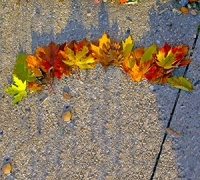In the summer, it's difficult to see the individual trees when looking out across a tree line due to the overwhelming shades of green. But in the fall, trees are going through their process of getting ready to survive the cold Wisconsin winter, making it easier to identify specific trees and pinpoint the location of some spectacular examples! Over seven years teaching in Riverside Park I've noticed the progression these trees go through and have concluded that fall has two basic stages of color change. Everything has its purpose, place and season – and nature ensures that each species within the cycle is beneficial in many different ways.
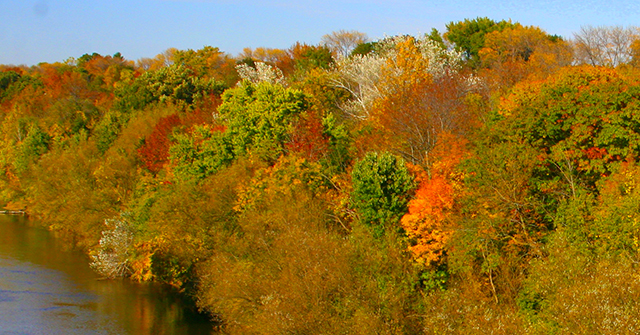
Photo: John Suhar
Fall Part One
During what I call "Fall Part One," you'll notice an array of red, orange, gold, purple and tan lining the city streets and splashing the forest. The first glimpses of color come with the beautiful oranges and reds of the sugar maples, the golds of the black locusts and the green ash (my favorite), and the light orange and glowing purples of the white ash.
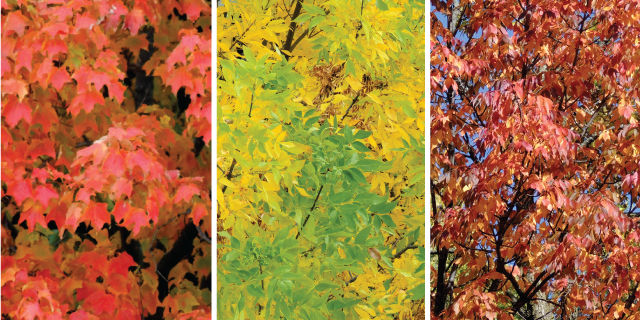
Sugar maple, green ash, and white ash at Riverside Park. Photo: Matt Flower
Also during this first stage, many fruiting species of plants and shrubs undergo a very early leaf color change in fall. Despite many fruits being red, deep blue or violet, they still may not be easily discovered by migrating birds. This early flush of color, called foliar fruit flags, may aid in attracting migrating birds to the plant. Good examples include poison ivy, Virginia creeper, sumac, nannyberry, dogwood and wild grape.
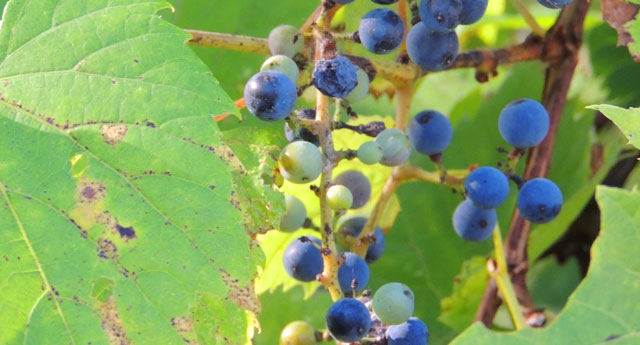
Wild grape. Photo: Matt Flower
Fall Part Two
After the aforementioned trees have lost their leaves, we can peer through their branches to marvel at the variety of trees that bring us a new palette for "Fall Part Two." The new stars of the forest are the deep cranberry hues of the white oak leaves and the rich, golden browns of the red oak. Many others such as the basswood, beech, black cherry, box elder and hackberry also line up for a turn to show off their splendor. Of course there are many trees I've left out that add to this array, but each shade of leaf and bark makes fall a fantastic display of change and nuance. Timing may vary depending on location and seasonal moisture, but in general the trend is the same every year. By traveling north or south or up or down in elevation, you can literally follow these trends and experience the wash of transformation!
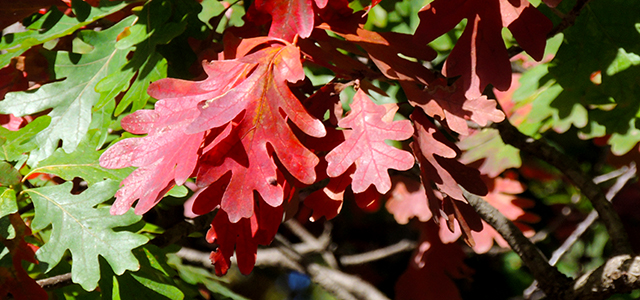
White oak. Photo: Matt Flower
After the show is over and the curtain is drawn, the show moves down to the forest floor. Though many leaves just fallen from a tree will show some signs of damage by herbivorous insects, it is easy to see that the leaves are generally intact. This means that the vast majority of the energy captured by the forest plants and stored within the leaves never enters the herbivores. Instead, that stored fuel falls to the ground with the leaf. There it enters the decomposer food chain, at the ground floor of which is bacteria and fungi. In excess of 90% of the dry matter made by forest plants during the growing season goes directly to the decomposers!
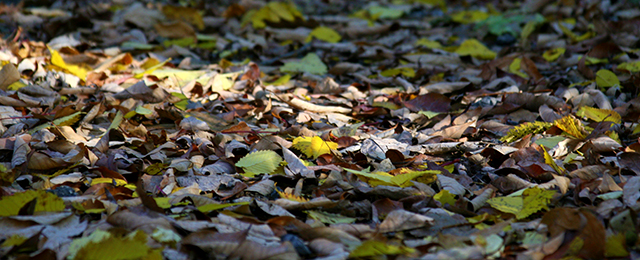
Photo: John Suhar
Not only do leaves fall at different times, but they are different in their nutritional makeup and texture. Some leaves decompose immediately, while others may take up to two or three years. This procession ensures a steady flow of energy to keep the whole system running. Amazing! Like Frank Lloyd Wright said, "form follows function." How perfect that we benefit from the form and the function in such a colorful fashion!


